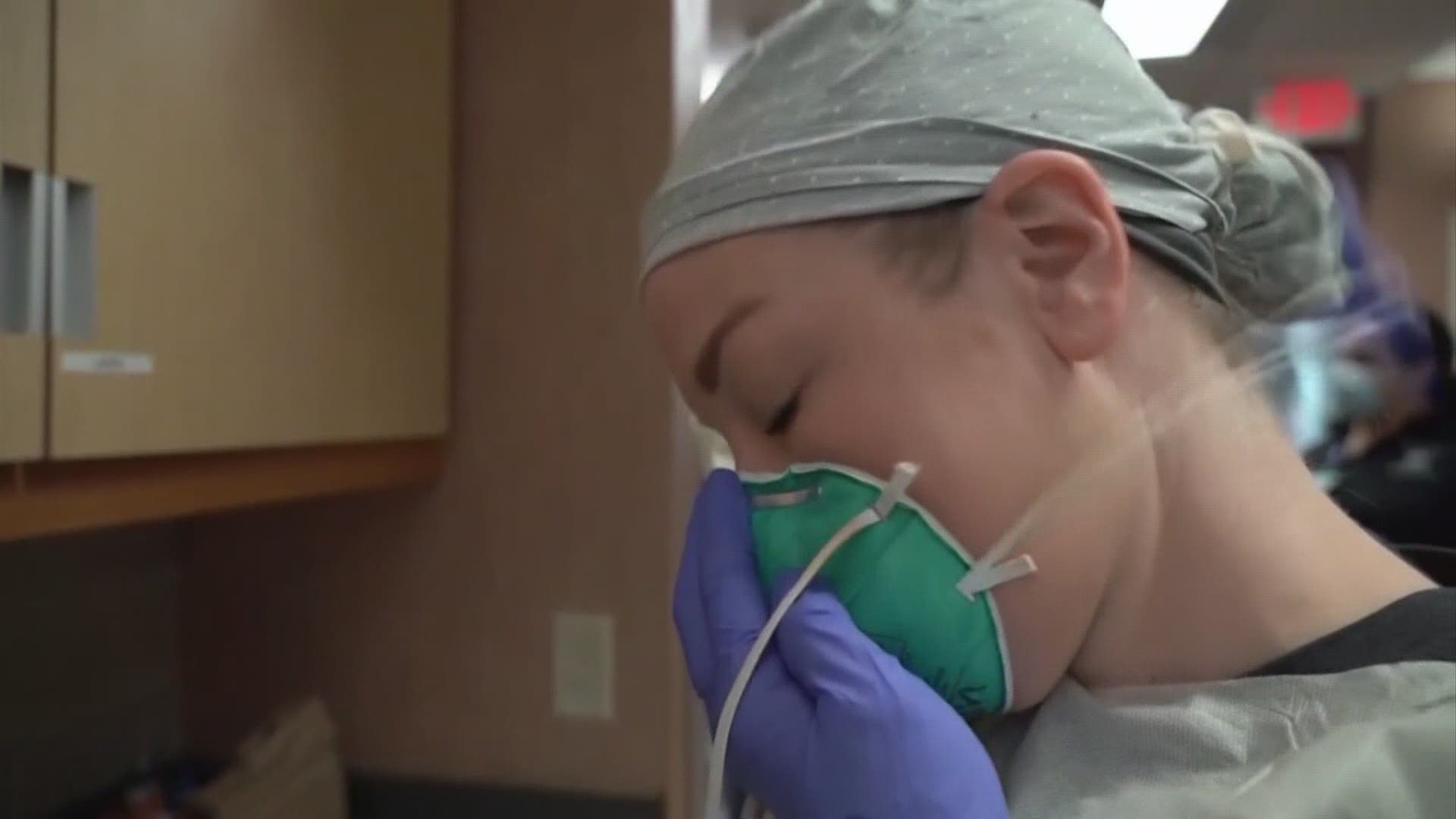COLUMBUS, Ohio — Ohio is seeing a concerning trend with COVID-19 cases surging and a record number of people in the hospital.
As of Tuesday, the Ohio Hospital Association reported to the Ohio Department of Health 3,648 Ohioans were in the hospital with COVID-19. Meanwhile, 897 COVID-19 positive people were in the ICU and 441 were on a ventilator.
"I am confident in saying that the next three-to-four months will be the most challenging for us as a country, as a state, and as a region," said Dr. Joseph Gastaldo, an infectious disease specialist with OhioHealth.
As 10TV learned, the main concern for hospitals right now isn't PPE, but staffing and space. Doctors and nurses are getting sick in their communities as cases are surging.
"As more people do have COVID in the general public, as more people in the general public require quarantine, that's also what we're dealing with in health care," Gastaldo said.
Leaders continue to encourage mitigation strategies for COVID-19, including wearing a mask, social distancing, practicing good hygiene and staying at home. The goal is not only to protect Ohioans from getting sick but also to avoid overwhelming our healthcare system.
"We have to be able to take care of COVID patients and still provide vital health care for those who have heart attacks and strokes and other medical conditions, which require hospitalization," Gastaldo said. "The worst-case scenario - and we are nowhere near this - is there is not enough bed capacity to do both."
These concerns are felt not only in urban areas but in rural hospitals too.
Stacey Gabriel, President and CEO of Hocking Valley Community Hospital, said they're at 65-70% capacity right now. Before this, capacity was closer to 45-50%.
"We're seeing more patients in our ERs, in our urgent cares, and we're seeing an increase in testing in our out-patient services. So, if those patients then require hospitalization, that's really going to cause havoc on our facility as well as our surrounding facilities," Gabriel said.
Rural hospitals often transfer patients to bigger facilities, but with space tight nearly everywhere, that is tough. On top of that, money is tight.
"Back in the spring when this all hit, we saw an automatic decline in 50% of our revenue literally overnight," Gabriel said.
While Gabriel said they are starting to recover financially, many rural hospitals cannot take another hit. They rely on elective procedures for revenue.
"It's trying to figure out how can we surge within the hospital and still maintain doing those services that are so crucial to the financial stability of rural hospitals," she said.
Where we could be headed in Ohio, certainly isn't good. However, we do have tools in our toolbox to change course: wear a mask, social distance, practice good hygiene, and stay home when you can.
"Take a look in the mirror. Say to yourself, 'What can I do to do my part in my community to protect my friends, my neighbors, my family that I love and support?' That would be my plea," Gabriel said.

